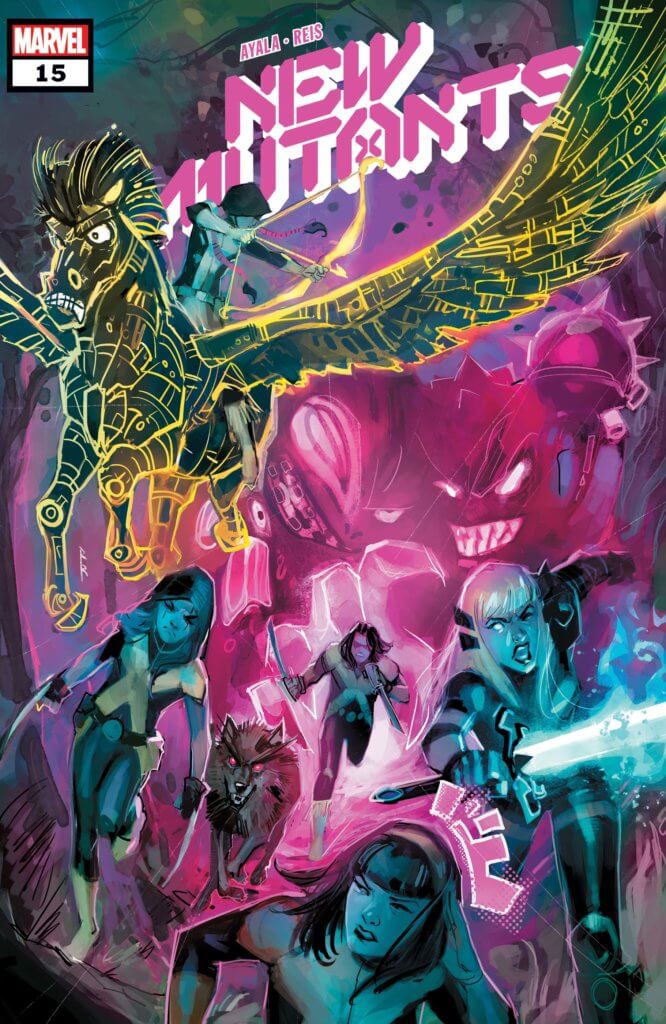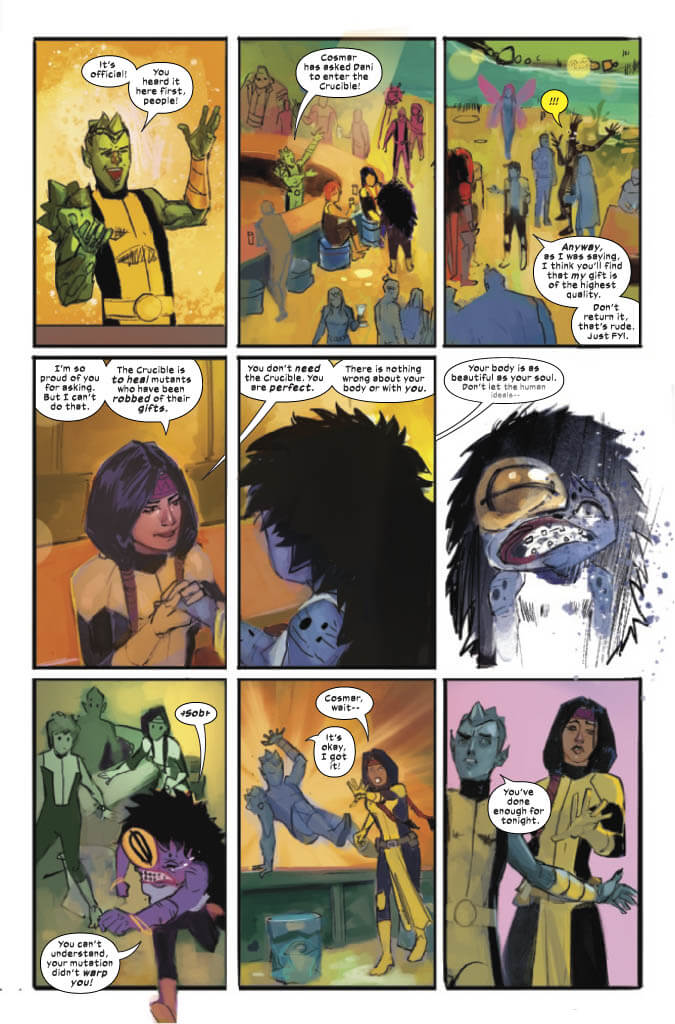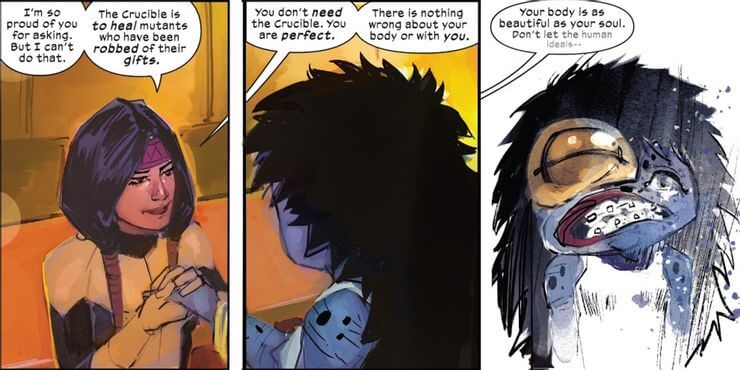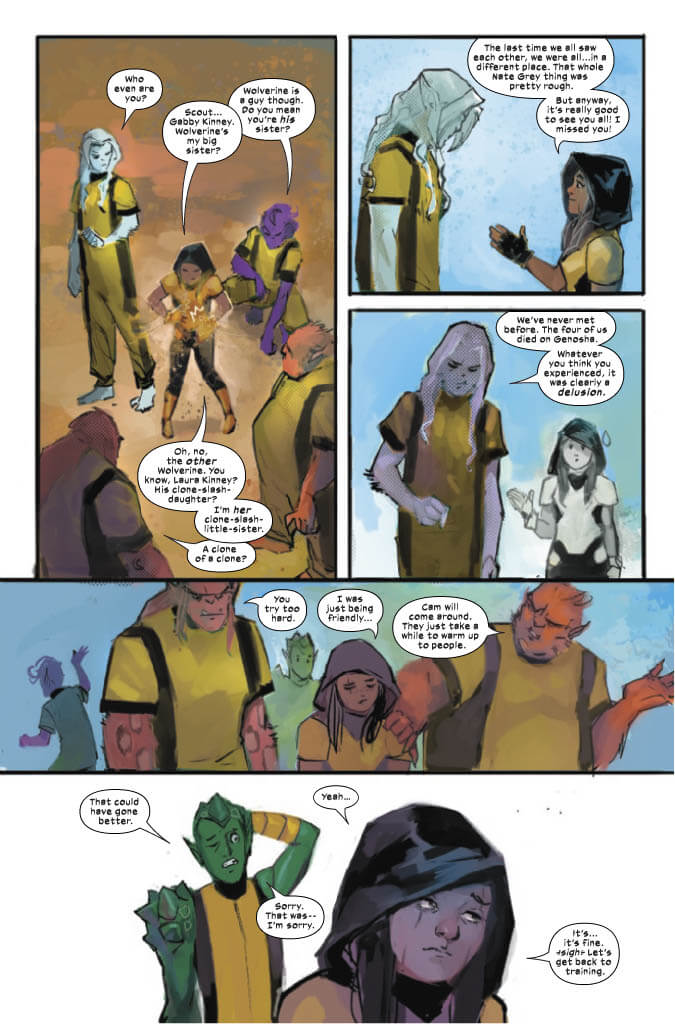Content Warnings: Transphobia, Trans-Medicalism, Dysphoria, intracommunity discourse
Marvel’s X-Men have always stood in for marginalized communities and intersections. Since their very inception, they’ve been the allegory for our experiences well before we were able to hold space on the page. The mutant metaphor is absolutely rife with allegorical narratives for the trans experience. It’s an aspect of the metaphor that was unwittingly baked into the X-Men well before writers were consciously crafting these narratives within the text and/or subtext of the story. In its best moments, the metaphor serves as a window into the experiences of queer and trans people in navigating weighty concepts such as identity, belonging, autonomy, persecution, and self-actualization. But for an inexcusably long period of time, we’ve lacked explicit trans representation on the page. Until recently, there had only been two issues, featuring a trans mutant, Marvel Comics Presents #150 and #151 (1994), telling the story of a young girl named Jessie Drake, Marvel’s first transgender mutant. Unfortunately, Jessie’s story is short and weighed-down with dated tropes that have ultimately not aged well. For a while though, that was all there was in the way of canonical trans representation, and so much of the subtextual stories told after this point have rarely felt satisfying.

With the recent release of New Mutants #15, written by Vita Ayala and drawn by Rod Reis, readers were treated to a delightful double-serving of trans visibility. For starters, this issue casually (re)introduced readers to Cam, the somewhat moody non-binary mutant that had previously made an appearance in Ayala’s Prisoner X series during the Age of X-Man event. This reveal was simple and almost mundane, alluding to Cam’s identity only in the use of singular they/them pronouns when other members of the mutant cohort refer to Cam.
All things considered, this is a win, but I would be remiss if I didn’t hold space for the frustrations some community members have expressed with regards to the framing of this representation within the larger narrative. Before I do, let’s get some disclaimers out there. What I’m about to say does not in any way conflict with or contradict my love for this issue. I firmly believe that we need stories that make use of casual representation, as one prong of the larger approach to normalization and visibility. That said, Cam is a peripheral character of the issue, with an objectively low page count and few speaking lines. It would be a lie to say that this felt satisfying in the context of being the first trans mutant to show up since 1994. When I step outside of the often inseparable history of trans exclusion and erasure in Marvel comics, this issue is an objective triumph. But within the context of this history, it’s a stinging reminder that we are still inhabiting the periphery, unable to hold the same space as our cisgender peers. I want to reaffirm that this is not a criticism of this issue, the work of the creative team, or the story they told; this is a criticism of the larger industry structures that frame it. It is unfair and bad-faith to ask a single writer, who comes from our community to right the wrongs of the industry at-large in a single issue. No one writer can or should be expected to remedy the almost 60 years of inexcusable trans erasure in Marvel comics.
From here on, there is going to be a large discussion of dysphoria (as the prefacing content warning suggested). If prolonged discussion of dysphoria is triggering for you, this may be the point at which you put this essay down. If the word dysphoria is unfamiliar to you, time for an educational moment. Dysphoria, outside of the context of the experiences of trans people, generally mean a state of intense incongruence or unease. It can take on both chronic and acute forms for people and can vary in its intensity. For trans people, dysphoria is most commonly summarized to describe an inconsistency between our innate sense of our gender and aspects of our sex-characteristics, social navigation, or other bodily manifestations. The term has a storied history for our community though, which has unfortunately tethered the term to the ongoing and historical pathologization of trans and gender-variant people. It’s important to reconcile with the fact that dysphoria was not a term that we as a community constructed, it was applied to us at the end of a long history of medical-persecution and pathologization.
There are many aspects of this issue that I love, but other folks have already so eloquently dissected the issue over at WWAC and ComicsXF. What struck me hardest about this issue’s narrative was the nuanced way it delves into what it means to own a mutant body, and how varied those experiences are. Owning a body is hard enough, owning a political body is a feat on any given day. The conversation between Dani and Cosmar perfectly plays out a dynamic that we see so much in the trans community surrounding who does and does not transition, and to what ends they chose to transition to. The experience of dysphoria is so immensely personal, and in just a few panels, Ayala captures a very real tension that occasionally emerges within trans discourse. Dysphoria is owned by the individual, not the community at large and that can be so hard to communicate in general, let alone through a metaphor such as mutation. Dani’s privilege and ignorance are on full display, while never shaming the character or invalidating her position. We’re able to empathize with Cosmar’s pain, without turning Dani into the villain. Dani’s mutant-politique and Cosmar’s dysphoric experience clash, while holding space for the validity of both. This space can be hard to hold within the trans community.

Dysphoria is a topic that can generate some truly intense emotions, because of the intensity of the experience and because even within our own communities, trans bodies are intrinsically politicized. It’s possible to distill the spectrum of dysphoric experience as a spectrum between two larger concepts of dysphoria; bodily, and social, which are often presented as incompatible, with one implied to invalidate the other. Dani’s conceptualization of dysphoria is more closely aligned with the view that society forces us to internalize and perpetuate many misconceptions about gender. Dani’s feelings are that human- society has forced mutants to internalize a set of pre-conceptions about their bodies, and that Cosmar’s pain and the misalignment that she feels is the result of having not unlearned these internalized biases. This becomes more problematic when a human-passing mutant says this to a mutant who is not. In the trans community, some describe dysphoria as a societal issue that we must unlearn, recognizing that there is really no such thing as the “body of a man” or “body of a woman”. Out of this recognition, the social model of dysphoria posits that dysphoria itself is created by the misalignment between internalized gender-determinist associations and our own bodies.
While this is true for some, it is not true for all, and holding too closely to this model without holding space for other concepts of dysphoria can be harmful and invalidating. It’s an imperfect metaphor, but you can see the damage that a strict adherence to this model can cause, in the scene between Dani and Cosmar. By failing to account for and respect Cosmar’s autonomy and her pain, Dani is engaging in incredibly invalidating (though well-intentioned) behavior. The way that some trans people recognize and articulate their expression/perceptions of their gender is so innate, that one can’t entirely exclude the bodily/innate model.

Even if you feel that dysphoria is generated by society, it is not society that has to live with the pain it may cause. Again, dysphoria is owned by the individual, and even if it’s the result of internalizing a determinist-binary, it is still felt so intensely that it’s fair to describe it as an innate experience. The social model would say that dysphoria is a misalignment between how a person perceives their gender and the expectations that society imposes. This model posits that facial hair may cause some trans and gender-variant people dysphoria because society has perpetuated the cultural myth that women don’t or should not have facial hair. The social model may look sound on paper, but it can often ignore the lived experiences of trans people who battle with dysphoria. The social model doesn’t fully account for how these expectations are then internalized and unconsciously inform our innate expectations and perceptions of our own gender. Regardless of the origin, we are the owners and inhabitants of these bodies, and so the dysphoria becomes our own. Telling Cosmar that her dysphoria is the result of human society’s biases is ultimately pointless. That knowledge may never alleviate the pain Cosmar feels, what will is taking actionable steps to remedy the root causes of that dysphoria, for her own health and wellbeing. For Cosmar this is necessary, it is not Dani’s place (particularly as a human-passing mutant) to dispute this. Then there is the added layer of Cosmar’s age, which draws to mind the ongoing discourse of when and to what degree trans children should be allowed to transition.
Ayala’s story won’t soon leave my head. It so delicately and authentically tackles the type of discourse about bodily autonomy that can feel like a minefield to navigate in the real world. There’s an exciting deconstruction beginning in this issue, forcing us to consider what a mutant body really is. What is the mutant body-politique in the face of the resurrection protocols? What does it mean to choose to pass or to choose not to pass, within the context of utopia? Where does the dominant body-politique conflict with body autonomy? These are exciting questions to be asking, and I’m genuinely excited that these questions are being asked without immediately entangling Cam’s character.

Cam is allowed to hold space on the page outside of their experience as a trans person. They are not reduced to a vehicle for dysphoria. They simply exist, in a form of casual representation that while humble and understated, is so crucial in normalizing trans people in the media. There’s validity to the concerns that Cam’s role in this issue falls into a frustration trend to keep trans and gender-variant characters “in the background”. But this is also a serialized licensed property, and expecting a single new character, to be (re)introduced in an ensemble-driven book like New Mutants, and take center stage, is an unrealistic demand. We know that Cam and the other mutants are confirmed to be trans and/or non-binary by Ayala via social media from their Prisoner X run will be consistent players in this title and possibly others. While we may all have preferred Cam to be this issue’s pivot-point, that’s not the way this industry works and I have nothing but faith and trust that Ayala will not let these four mutants fall to the wayside.
Knowing what I know about work for hire gigs on licensed properties, I know that even peripheral representation may have been hard-won. If readers are understandably frustrated by the more modest scale of Cam’s role in the issue, the greater complexity of the industry is to blame here, not the creative team. Let’s continue to remind ourselves of that, as though it were a mantra. This is a Marvel upper-leadership issue. If you feel frustrated, aim that frustration at the conservative corporate agenda of the industry, not the creatives working hard to make the most of every opportunity they can find to make our community visible. Lift up our victories and continue to demand more, but do not cannibalize your own community by criticizing the folks who celebrated all the many things that came from this issue. Celebrating little victories does not distract from the larger battle of achieving better representation and finding joy in these moments is how we sustain that battle.
